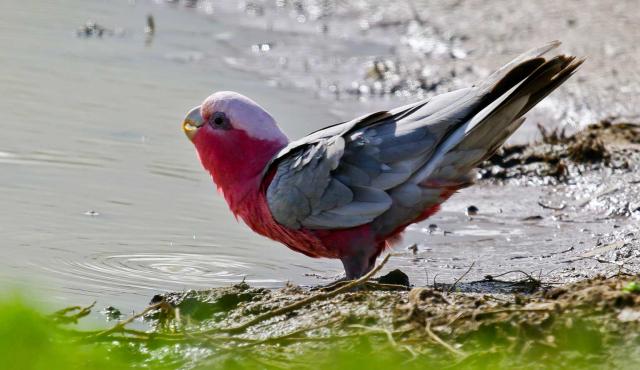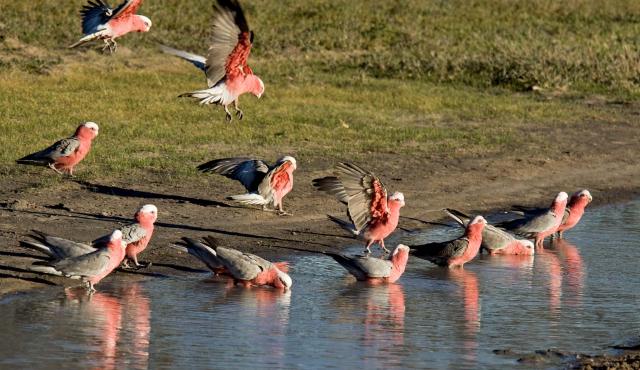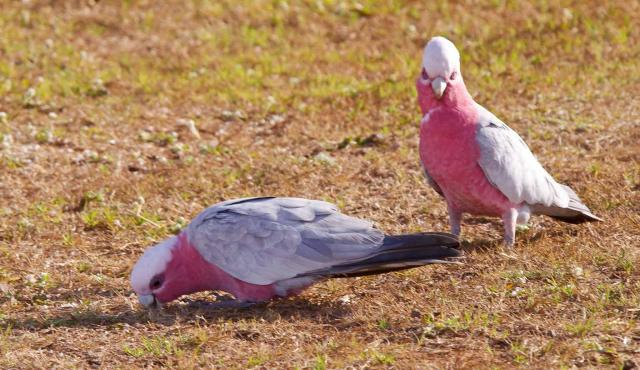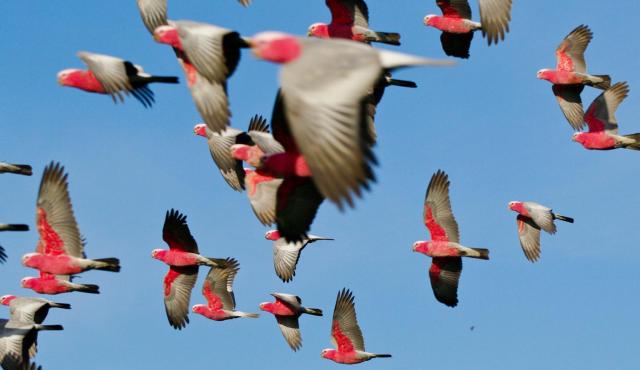A range of teacher professional learning programs will be developed to accompany the Biodiversity of the Western Volcanic Plains online outreach...





Galah
Eolophus roseicapillus
Breeds July-December in southern Australia. Forms permanent pair bonds although will pair again if one does not survive. Nests in tree hollows or similar. Clutch size is between 3 and 6 eggs. Both sexes incubate eggs and care for young. Young fly at 6-7 weeks. Huge flocks of birds congregate and roost together at night.
| Details | Description |
| Type | Bird |
| Group | Cockatoo |
| Other Common Names | Rose Cockatoo, Roseate Cockatoo, Rose-breasted Cockatoo. |
| Identifying Characteristics | |
| Distinctive Markings | The male has a dark brown eye while the female has a red eye. |
| Diet | Herbivore. Feeds on seeds mostly from the ground including seeds from grasses and cultivated crops. |
| Habitat | Timbered habitats, usually near water. Now found in urban areas following clearance of subcoastal woodlands for farming. |
| Native Status | Native to Australia |
| Sounds | Harsh, metallic and abrupt "chirrink - chirrink, chirrink - chirrink, chirrink - chirrink". In alarm makes a harsh, scolding, rasping sound. |
| Taxonomy | |
| Phylum | Chordata |
| Class | Aves |
| Order | Psittaciformes |
| Family | Cacatuidae |
| Genus | Eolophus |
| Species | roseicapillus |

Distribution maps indicate current and historic locations where species have been sighted.
Source: Atlas of Living Australia
| Conservation Status | |
| DEPI Advisory List | Not listed |
| FFG Act | Not listed |
| EPBC Act | Not listed |
The conservation status of species is listed within Victoria and Australia.
The Department of Environment and Primary Industry (DEPI) Advisory List consists of non-statutory advisory lists of rare or threatened flora and fauna within Victoria.
The Flora and Fauna Guarantee Act 1988 (FFG Act) lists threatened species in Victoria. Under the Act, an Action Statement is produced for each listed species.
The Environment Protection and Biodiversity Conservation Act 1999 (EPBC Act) is the Australian Government’s key piece of environmental legislation, listing nationally threatened native species and ecological communities.



